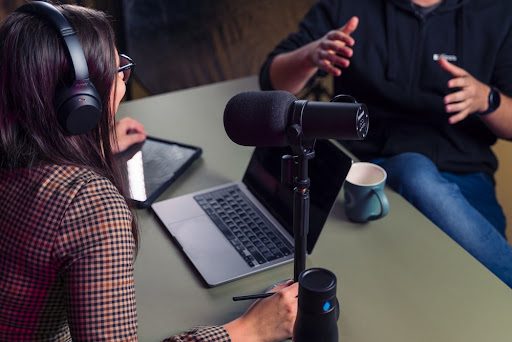Qualitative interviews are more than just casual conversations. Some qualitative research interviews may not follow a strict structure and allow the researcher to explore any topics in the moment. In contrast, other interviews may be highly structured and aim to collect the same kind of information across participants. As a matter of empirical research, research interviews require careful planning, execution, and reflection to ensure they yield valuable and trustworthy data. Here are some key components to consider:
Developing appropriate interview questions
The foundation of any successful interview lies in its questions. Good interview questions are open-ended, clear, and directly related to the research objectives. They should allow participants to share their experiences, opinions, and feelings without leading them toward certain answers. In qualitative research, it's often useful to have a mix of more and less structured questions, allowing for both depth and breadth in responses.Building rapport with participants
Establishing rapport with interviewees encourages open and honest responses. In-depth interviews can be challenging if the interviewer doesn't know the interviewee in detail or hasn't established the necessary trust.
Researchers establish rapport with interviewees by displaying empathy, active listening, and respect. Clarifying the purpose of the interview, ensuring confidentiality, and asking for consent before beginning can also help in building trust.
Note-taking and recording
Accurate and comprehensive documentation of interview data is critical. While audio or video recording is highly recommended for completeness and accuracy, it's also beneficial to take notes during or immediately after the interview. These notes can capture non-verbal cues, the interviewer's impressions, and any issues or incidents that occur during the interview.Ethical considerations
Ethical considerations are paramount in any research involving human participants. Researchers must obtain informed consent, respect participants' privacy and confidentiality, and ensure participants understand their right to withdraw from the study at any time without any negative consequences. It's also important to be aware of power dynamics and strive for a respectful and equitable researcher-participant relationship. The effectiveness of a qualitative interview largely depends on the thoughtfulness and rigor with which these components are addressed. Interviews are not just a data collection tool; they are a way of acknowledging and respecting participants' lived experiences and perspectives. Therefore, each component should be handled with utmost care and consideration.Fundamental types of interviews
The structure of an interview can greatly influence the data collected. The level of structure varies along a continuum, with structured and unstructured interviews occupying opposite ends of that spectrum.Unstructured interviews
Unstructured interviews are characterized by their flexibility. The researcher usually only has a list of topics or themes to be covered, known as an interview guide, but the conversation does not follow a predetermined set of questions. Instead, the interviewer allows the conversation to flow naturally, following leads provided by the interviewee. An unstructured interview is particularly useful when the researcher is exploring a new area of study and aims to gather as much information as possible without preconceived notions.Semi-structured interviews
Semi-structured interviews strike a balance between flexibility and structure. The researcher has a list of predetermined questions to conduct interviews but is free to ask additional open-ended questions or to deviate from the list based on the interviewee's responses. The semi-structured interview is the most common form of interview in qualitative research, as it provides deep, rich data while still ensuring that all necessary topics are covered.
Structured interviews
Structured interviews, sometimes called standardized interviews, are the most rigid form of interview. The researcher asks the same set of predetermined questions in the same order to all participants, with little to no deviation. While a structured interview may limit the depth of data collected, it allows for greater consistency across interviews. This can be helpful for keeping responses confined to the research topic and comparing responses between participants. In determining the level of structure for an interview, researchers should consider their research objectives, the nature of the topic, and the characteristics of the participants. Different structures lend themselves to different research goals, and the most effective interviewers are those who can adapt their approach based on the needs of their study.Process of conducting an interview
Conducting an interview in qualitative research involves a series of well-planned steps before, during, and after the interview. These steps ensure that the process is systematic, ethical, and capable of yielding high-quality data.Pre-interview preparation and research
Before conducting the interview, the researcher needs to thoroughly understand the research topic, define the purpose of the interview, and identify potential interviewees. Preparing an interview guide with key themes or questions is essential, though the level of detail will depend on the interview structure. Logistics, such as scheduling the interview at a convenient time and place for the participant and ensuring necessary equipment is available and working, also need to be addressed.Conducting the interview
The interview begins with an introduction in which the interviewer explains the purpose of the interview, assures confidentiality, and obtains consent from the participant. Throughout the interview, the researcher should aim to build rapport, listen attentively, and adapt their questioning based on the interviewee's responses. Non-verbal cues should also be observed and noted, as they can provide additional insights.Post-interview activities
After the interview, it is important to thank the participant for their time and contribution. Researchers should then promptly transcribe the interview while the details are still fresh. Reflections and observations about the interview should also be noted, including the context, the behavior of the participant, and any unexpected occurrences. These notes can provide valuable context during data analysis. Executing each of these stages effectively requires not only good planning and organization but also interpersonal skills, flexibility, and respect for the participant. The quality of the data collected during an interview is largely dependent on how well the interview process is managed.Transcribing interviews
The transcription of interview data is a critical step in the qualitative research process. This involves converting the recorded audio or video interviews into written text, providing a detailed account of the dialogues that took place during the interviews.
Transcriptions allow for more detailed examination, analysis, and reporting of the data. However, making transcriptions can be arduous and time-consuming. Here are some key considerations in the transcription process:
